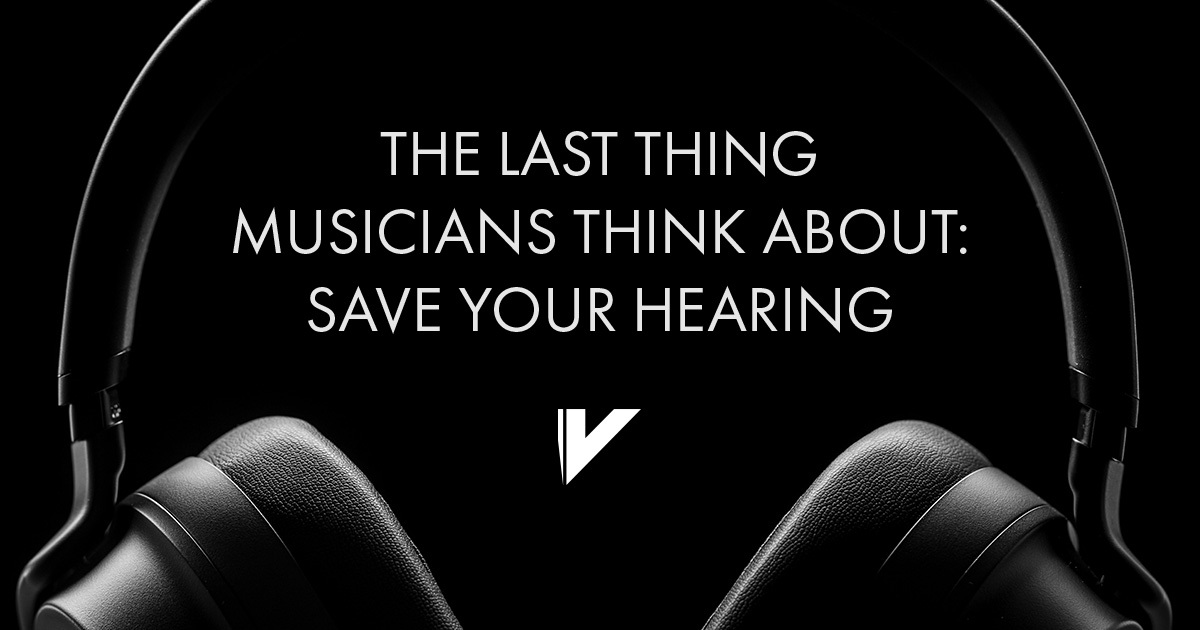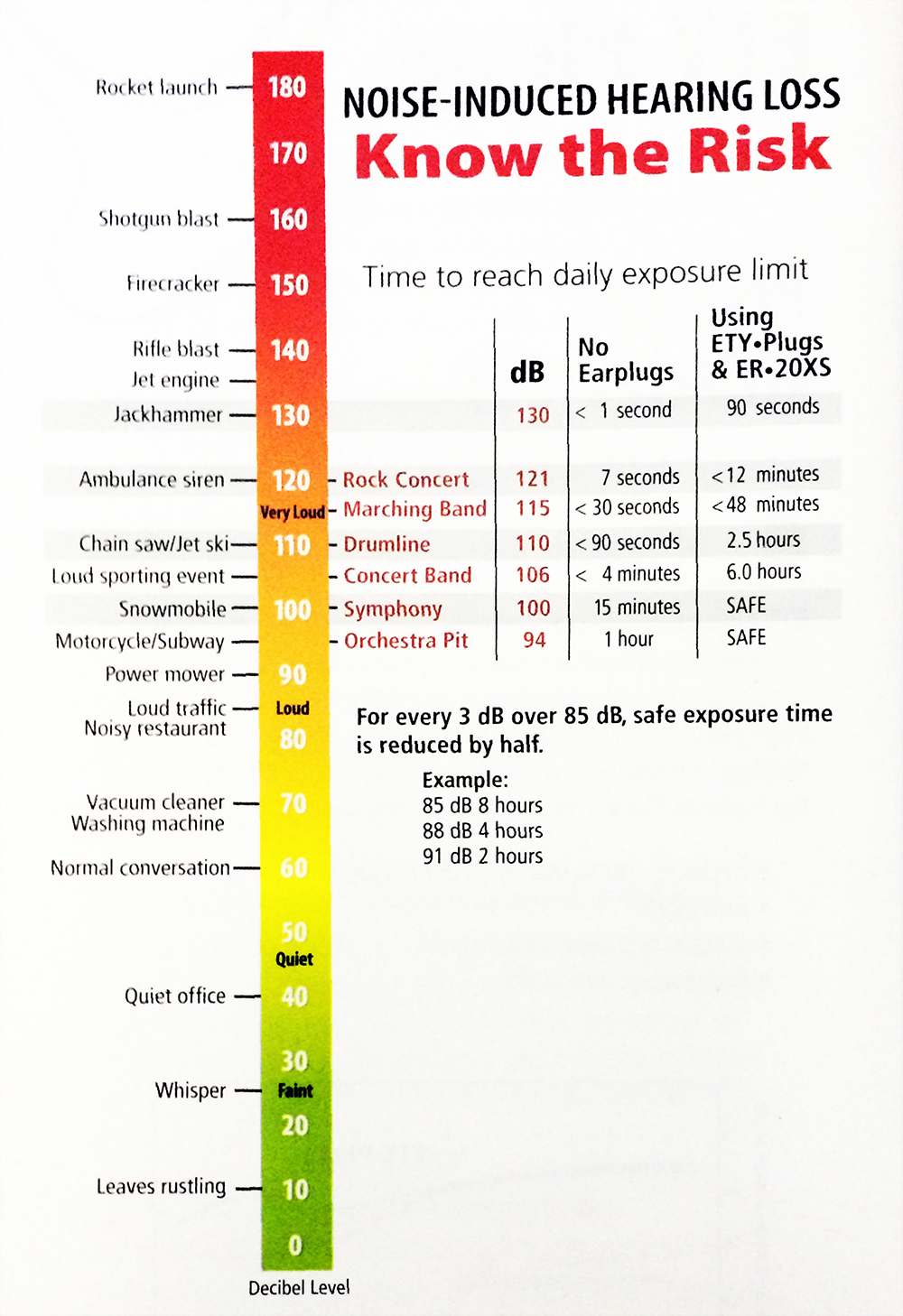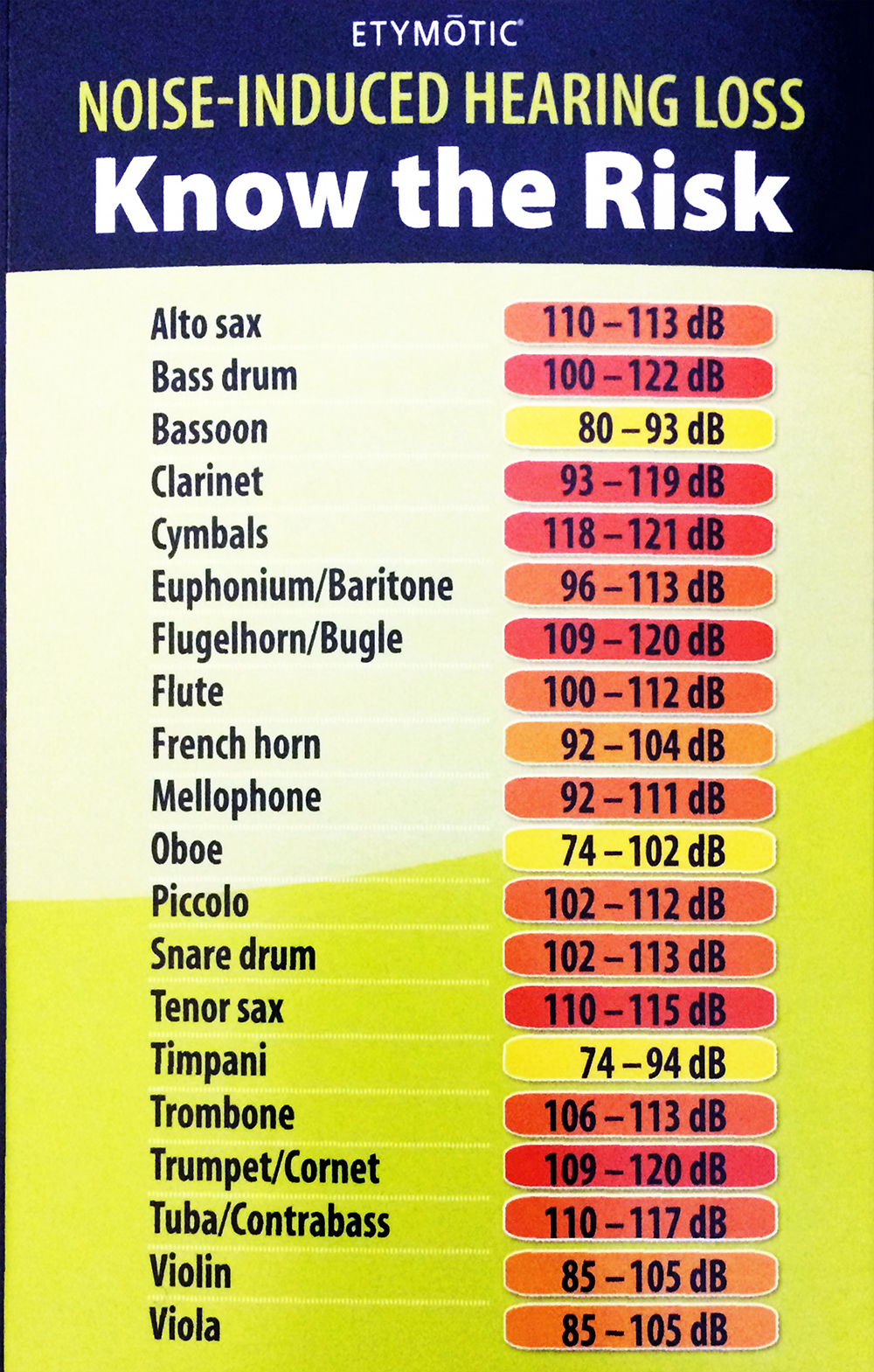The Last Thing Musicians Think About: Save Your Hearing
by Mitchell Estrin
Date Posted: January 10, 2017

Hearing is a precious gift and one that must be protected. Once hearing has been damaged through long-term exposure to high-decibel music and/or sound, the loss cannot be restored. Thus, prevention and protection are essential.
As musicians, we often take our hearing for granted, especially when we are young. The first step to protecting and preserving one's hearing is to realize just how delicate and fragile the membranes of the inner ear are. With this in mind, the next step is to get proper hearing protection to be used in situations that are potentially dangerous to hearing. For musicians, this means wearing ear plugs. These should be small and inconspicuous. It would be impractical for musicians to wear the "headset" ear muffs like the ones worn by airport personnel and construction workers.
My first professional job as a musician was at age 20, playing in a symphony orchestra that backed up the rock band, Emerson, Lake, and Palmer. At the time, ELP was noted in the Guinness Book of World Records as one of the loudest rock bands in history. (Guinness has since stopped measuring this statistic, in an effort to discourage bands from going for a new record, while deafening their audiences.) This extreme volume is measured in decibels, and was comparable to having your ears next to a jet engine. Fortunately for me, 3M had recently developed disposable sets of foam earplugs called EAR, which saved the day for me. I bought a couple of dozen pairs, and wore them in every rehearsal and performance. At first, my perceptions of my sound and how it related to the ensemble was a bit askew. But, I adjusted quickly and learned to play very well with the plugs in. This may have saved my hearing!
It is worth noting here that wearing hearing protection as a musician was something that was not common and likely frowned upon, in the 1970s. I stood my ground, however, and have never wavered from that day forward. Since that time, I have always carried ear plugs in my clarinet case and used them when appropriate.
"I played for over 20 years with the New York Philharmonic, where I also utilized hearing protection when necessary." - Mitchell Estrin
I played for over 20 years with the New York Philharmonic, where I also utilized hearing protection when necessary. I was always discreet when putting in or removing the ear plugs. During rehearsals for a particular work, I would make decisions as to when to insert and when to remove the ear plugs, and would notate this in my music. This was necessary in works with extremely loud volume (Mahler symphonies, contemporary scores, etc.). My decisions as to when to use hearing protection also depended on the physical setup of the orchestra on the stage. Sometimes, I would be directly in front of the brass section, or the percussion section. This sent up the red flag. I always removed my ear plugs before playing softer sections, and anytime the music required sensitive entrances and tuning.
I remember one instance when I was playing a long run of The Nutcracker ballet. My chair in the orchestra pit was literally two feet in front of the principal trumpet. I insisted to the orchestra manager that they place a Plexiglas shield between the back of my head and the trumpet bell. The trumpet player resented this and wouldn't speak to me, but I never regretted asking for and using the shield. For additional protection, I also wore ear plugs during several loud trumpet parts during the ballet.
In my current position as a university music professor, I sometimes work with the University of Florida "Pride of the Sunshine" Marching Band. This ensemble has more than 350 players and the sound is powerful with lots of brass and percussion. At football games, the band staff sits directly in front of the band, and we wear earplugs at all times. I also wear earplugs on airplanes and in any extreme noise situation.
There are many varieties of ear plugs you can wear. The inexpensive, but effective, EAR foam plugs (or similar), can be purchased at any CVS or Walgreens. These plugs effectively reduce the decibel level on all sound. More sophisticated ear plugs that allow better musical perceptions when playing can also be purchased rather inexpensively. The ETYMŌTIC ER20 is an excellent choice, and I carry a set of these in my clarinet case. For maximum musical perception and protection, custom ear plugs can be made for you by an audiologist. With a little research, you can determine safe levels of sound exposure and for how long. You can also evaluate each product to see what each one will offer you in terms of decibel reduction and musical perception.
After a 40-year career as a musician who was exposed to dangerous decibel level volume for many years, I am happy to report that I recently had my hearing evaluated at the Mayo Clinic, and tested age appropriate without any damage! Wear hearing protection and you will preserve one of the most delicate and important components of your overall health.


How do you protect your hearing? Share your tips and write in the comments box below.

About Mitchell Estrin
Mitchell Estrin is Professor of Clarinet at the University of Florida and Music Director and Conductor of the University of Florida Clarinet Ensemble. He was the past President of the International Clarinet Association and author of the biography Stanley Drucker Clarinet Master published by Carl Fischer. Estrin performed as a clarinetist with the New York Philharmonic for over twenty years in hundreds of concerts and on 19 tours. As an international concert artist, he has performed in 37 countries on 4 continents. As a studio musician, Estrin has recorded dozens of motion picture soundtracks for Columbia Pictures, Walt Disney Pictures, Paramount Pictures, MGM, 20th Century Fox, United Artists, and Warner Brothers on feature films. They include Fargo, Beauty and the Beast, Aladdin, Interview With a Vampire, Home Alone 2, Pocahontas, Doc Hollywood, Regarding Henry, TheUntouchables, and more. His television credits include recordings for ABC, NBC, CBS, CNN, HBO, TBS, and ESPN. Learn more about Mitchell Estrin.
Subscribe to the We Are Vandoren E-newsletter (WAVE) to receive 4 weekly articles for Performers, Students, and Educators